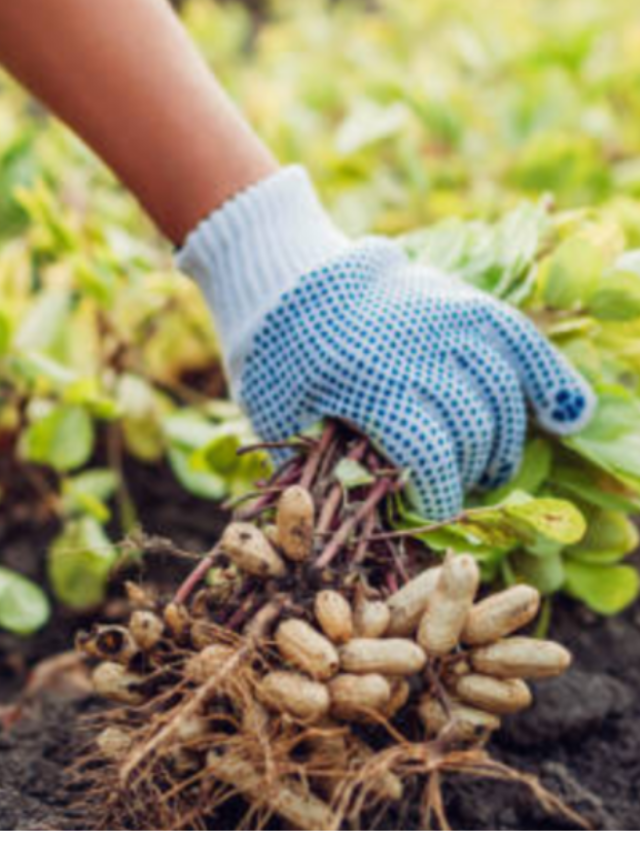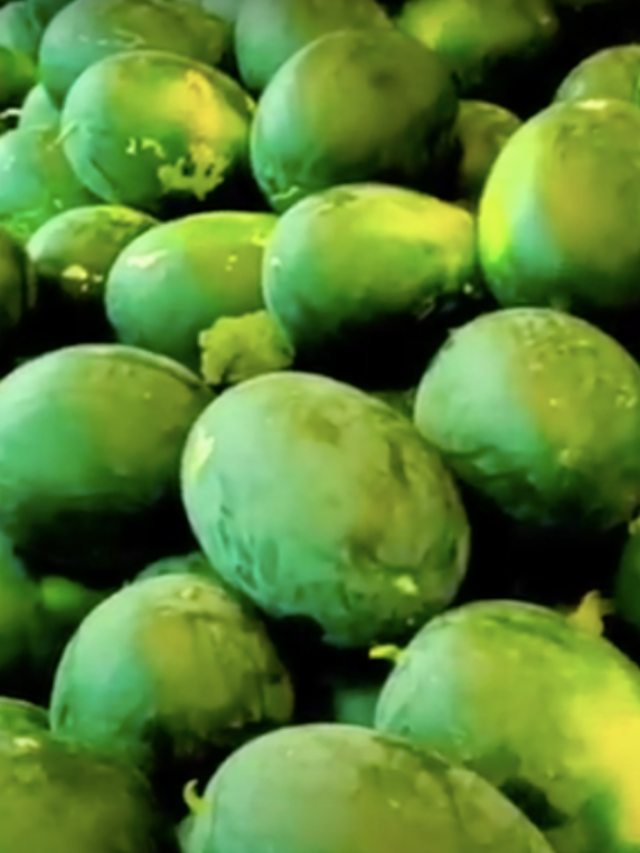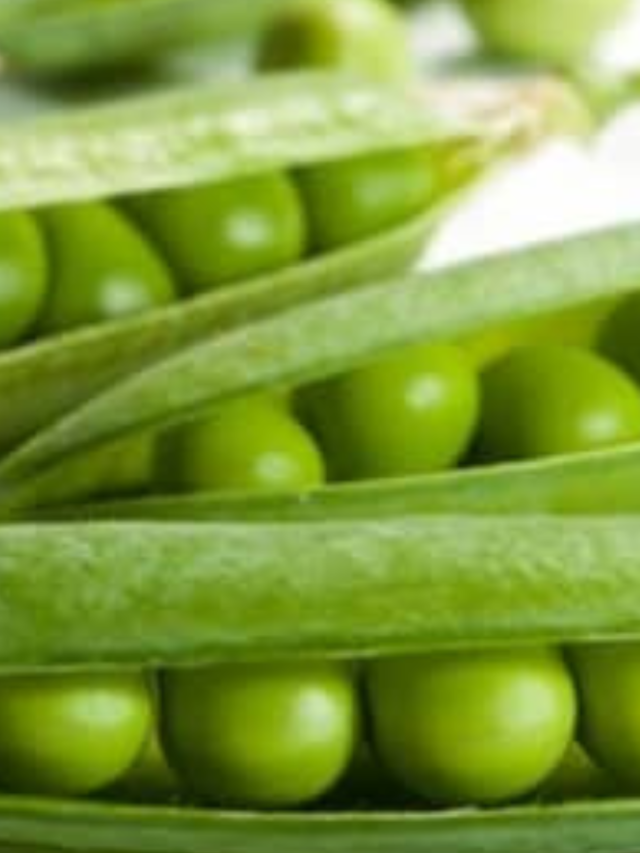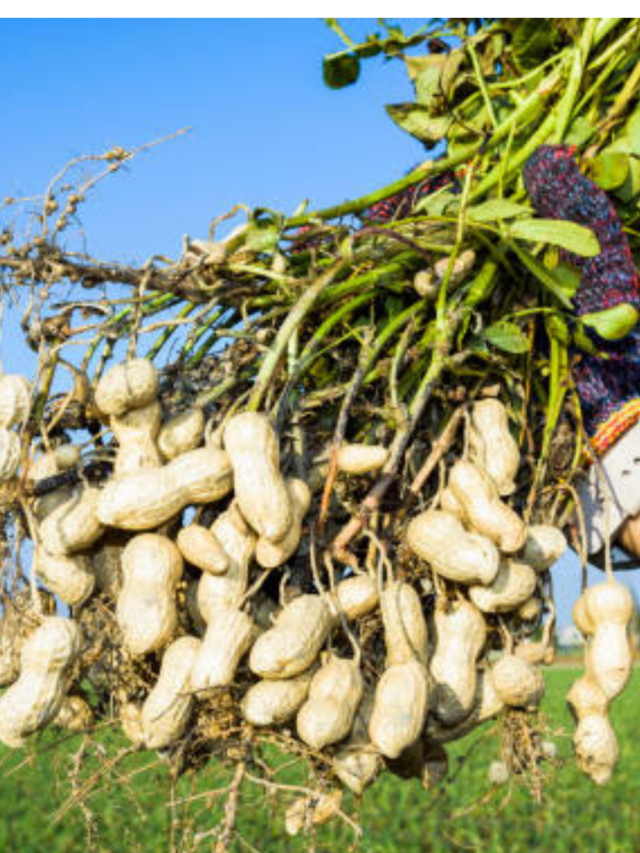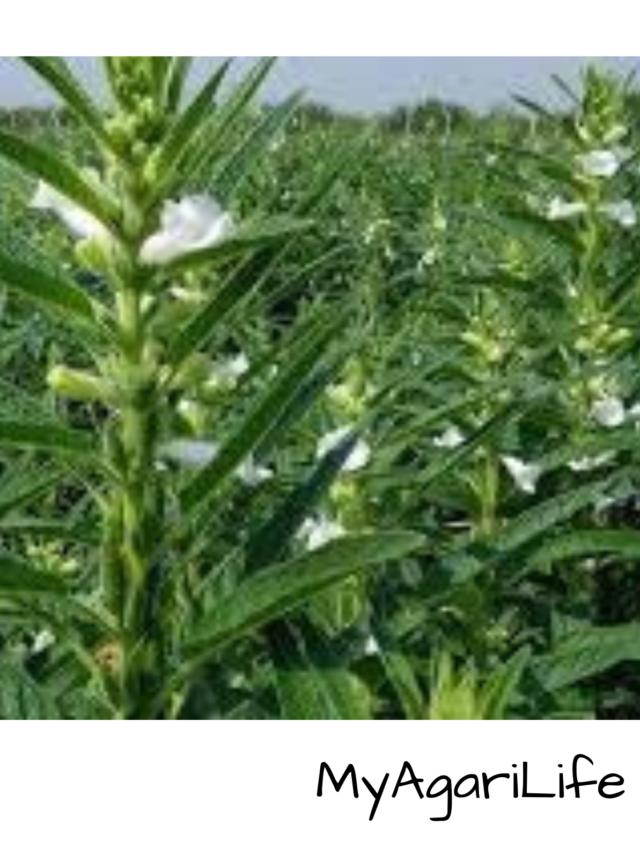Introduction
Agriculture plays a critical role in sustaining populations, ensuring food security, and driving economic growth worldwide. As such, identifying the best countries for agriculture becomes essential in understanding the nations that excel in cultivating fertile lands, implementing innovative farming practices, and achieving high agricultural productivity. These countries serve as global benchmarks, setting the standards for sustainable agriculture, efficient resource management, and successful rural development.
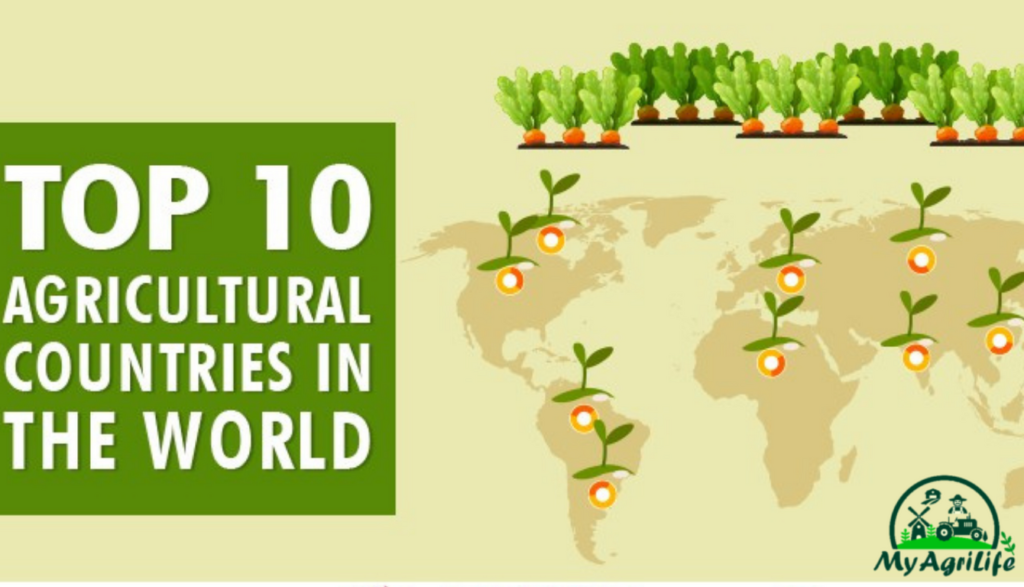
In this article, we delve into the topic of the best countries for agriculture, exploring the key factors that contribute to their success. We will examine their agricultural productivity, farming techniques, technological advancements, and supportive policies that enable them to thrive in the agricultural sector. Additionally, we will assess their commitment to sustainable practices, food security initiatives, and efforts to address challenges such as climate change and resource scarcity.
By understanding the best countries for agriculture, we can gain valuable insights into the strategies and practices that lead to agricultural excellence. This knowledge can inspire other nations to adopt similar approaches, promote knowledge exchange, and foster global collaboration to ensure a sustainable and prosperous future for agriculture worldwide. So, let’s embark on this exploration and uncover the leading nations that have transformed their agricultural landscapes into models of success.
1.Netherlands
2.United States
3.Brazil
4.China
5.India
6.Canada
7.Australia
8.France
9.Argentina
10.Germany
Netherlands
The Netherlands, often referred to as Holland, is a country located in Northwestern Europe. Despite its relatively small size, the Netherlands is renowned for its advanced agricultural practices and high productivity. Here are some key points about agriculture in the Netherlands:
1.Innovative Techniques: The Netherlands is known for its innovative agricultural techniques and expertise in precision farming. The country has pioneered the use of greenhouses and hydroponics, allowing for year-round cultivation of crops and maximum control over growing conditions.
2.Greenhouse Farming: The Dutch are world leaders in greenhouse farming, with extensive use of advanced technologies such as climate control, artificial lighting, and automated systems. This enables the production of a wide range of high-quality vegetables, fruits, and flowers.
3.High Crop Yields: The combination of advanced techniques, efficient irrigation, and soil management practices has resulted in high crop yields in the Netherlands. The country has optimized its agricultural systems to maximize productivity while minimizing environmental impact.
4.Dairy Industry: The Netherlands has a strong dairy industry and is one of the largest exporters of dairy products in the world. The country is known for its high-quality milk, cheese, and dairy innovations.
5.Sustainable Practices: The Dutch agricultural sector places a strong emphasis on sustainability. Many farmers in the Netherlands have adopted practices such as precision nutrient management, integrated pest management, and renewable energy generation to reduce their environmental footprint.
6.Agricultural Research and Education: The Netherlands has renowned agricultural research institutes and universities that contribute to the development of innovative farming techniques and technologies. These institutions collaborate with farmers and businesses to drive progress in the agricultural sector.
7.Agricultural Exports: Despite its small size, the Netherlands is a major exporter of agricultural products. It exports a wide range of goods, including vegetables, fruits, flowers, dairy products, and processed foods. The country’s strategic location and efficient logistics infrastructure facilitate its export activities.
8.Cooperative Farming: The Dutch agricultural sector has a strong tradition of collaboration through cooperative farming organizations. These cooperatives allow farmers to pool resources, share knowledge, and collectively market their products, enhancing their competitiveness.
Overall, the Netherlands has established itself as a global leader in agriculture by leveraging innovation, technology, and sustainable practices. Its success is attributed to a combination of favorable factors, including a skilled workforce, favorable climate conditions, and a supportive policy environment.
United States
The United States has a diverse and highly productive agricultural sector. Here are some key points about agriculture in the United States:
1.Extensive Farmland: The United States has vast amounts of arable land, with a total agricultural area of over 900 million acres. It encompasses a wide range of climates and soil types, allowing for diverse agricultural production across different regions.
2.Crop Production: The United States is a leading producer of various crops. It excels in the production of grains such as corn, wheat, and soybeans, as well as fruits and vegetables like apples, oranges, potatoes, and tomatoes. It also cultivates cotton, rice, and other specialty crops.
3.Livestock and Poultry: The United States has a significant livestock and poultry industry. It is one of the world’s largest producers of beef, pork, and poultry. Cattle ranching, hog farming, and poultry production are prominent agricultural activities.
4.Advanced Technology and Mechanization: The U.S. agricultural sector benefits from advanced technologies and mechanization. Farmers utilize modern machinery, precision farming techniques, and digital tools to improve efficiency, increase yields, and manage resources effectively.
5.Agricultural Research and Development: The United States invests heavily in agricultural research and development. Institutions such as the U.S. Department of Agriculture (USDA) and agricultural universities undertake extensive research to enhance productivity, develop new varieties, and address challenges related to pests, diseases, and environmental sustainability.
6.Global Exports: The United States is a major player in global agricultural trade. It consistently ranks among the top exporters of agricultural products, including grains, meat, dairy, fruits, and vegetables. Its efficient transportation infrastructure and well-established trade networks facilitate agricultural exports.
7.Farming Practices and Sustainability: American farmers employ various farming practices, including conventional, organic, and sustainable methods. Sustainability initiatives focus on soil health, water conservation, reduced pesticide use, and the adoption of renewable energy sources to minimize environmental impacts.
8.Government Support: The U.S. government provides support to the agricultural sector through policies, subsidies, crop insurance, and research funding. These measures aim to ensure food security, promote rural development, and maintain the competitiveness of American farmers.
9.Agricultural Diversity: The United States benefits from its agricultural diversity. Different regions specialize in specific crops and livestock based on their climate and resources. This diversity contributes to a stable and resilient agricultural sector.
10.Agricultural Employment: The U.S. agricultural sector provides employment opportunities for a significant number of people. It supports farmers, farmworkers, agricultural technicians, researchers, and numerous other professionals associated with the industry.
The United States’ agricultural sector is characterized by its scale, technological advancements, and productivity. It plays a crucial role in domestic food production and contributes significantly to global agricultural markets.
Brazil
Brazil is recognized as a global agricultural powerhouse, known for its vast agricultural resources and diverse range of products. Here are some key points about agriculture in Brazil:
1.Abundant Arable Land: Brazil boasts extensive arable land, making it one of the world’s largest agricultural producers. The country has a favorable climate for tropical crops, including soybeans, coffee, sugarcane, oranges, corn, and cotton.
2.Agribusiness and Commodities: Brazil’s agricultural sector is characterized by a strong agribusiness model. The country is a major exporter of agricultural commodities such as soybeans, beef, poultry, sugar, and ethanol. It has a significant presence in the global market for these commodities.
3.Soybean Production: Brazil is the world’s leading producer and exporter of soybeans. The country’s vast soybean plantations benefit from the favorable climate and advanced agricultural practices. Soybean production plays a crucial role in Brazil’s agricultural economy.
4.Cattle Ranching: Brazil is home to one of the largest commercial cattle herds in the world. Cattle ranching is a significant agricultural activity, with Brazil being a major exporter of beef. The country’s expansive grasslands provide ample grazing areas.
5.Ethanol and Sugarcane: Brazil is a global leader in ethanol production, mainly derived from sugarcane. The country has developed advanced technology for sugarcane cultivation and ethanol processing, promoting renewable energy and reducing reliance on fossil fuels.
6.Agroforestry and Amazon Rainforest: Brazil’s agricultural landscape also includes agroforestry systems, where crops and trees are cultivated together. However, deforestation and its impact on the Amazon rainforest remain significant concerns, as agricultural expansion and land use change have led to environmental challenges.
7.Small-Scale Farming: While large-scale agribusinesses dominate certain sectors, Brazil also has a significant number of small-scale farmers. They contribute to the country’s agricultural diversity, producing a range of crops for local consumption and regional markets.
8.Technology and Research: Brazil has made advancements in agricultural technology and research. Institutions like Embrapa (Brazilian Agricultural Research Corporation) focus on developing crop varieties, improving farming techniques, and promoting sustainable agriculture.
9.Land Reform and Social Issues: Brazil faces social issues related to land ownership, particularly regarding large landholdings and land reform. Efforts are being made to address land inequality and support small farmers.
10.Environmental Sustainability: Brazil has been working toward greater environmental sustainability in agriculture. Initiatives include promoting sustainable farming practices, reducing deforestation, and implementing stricter regulations to mitigate environmental impacts.
It is important to note that while Brazil has a strong agricultural sector, there are ongoing discussions and concerns related to land use, environmental conservation, and social issues. Efforts are being made to balance agricultural production with sustainability and address these challenges.
China
China has a significant and diverse agricultural sector, playing a crucial role in feeding its large population and contributing to global food production. Here are some key points about agriculture in China:
1.Crop Production: China is one of the world’s leading producers of rice, wheat, corn, and various other crops. It has a diverse range of agro-climatic zones that allow for the cultivation of different crops across different regions.
2.Rice Production: Rice is a staple food in China, and the country is the largest producer and consumer of rice globally. Both paddy rice and upland rice are cultivated, with different regions specializing in different varieties.
3.Wheat and Corn Production: China is also a major producer of wheat and corn. Wheat is primarily grown in the northern regions, while corn is cultivated in various parts of the country. These grains are essential for China’s food security and livestock feed.
4.High-Yield Farming: China has made significant advancements in agricultural technology and techniques to improve crop yields. It has implemented high-yield farming practices, including the use of improved seeds, mechanization, irrigation systems, and precision farming techniques.
5.Vegetables and Fruits: China has a thriving vegetable and fruit production sector. It cultivates a wide variety of vegetables, including cabbage, tomatoes, cucumbers, and peppers. It is also known for its production of fruits such as apples, oranges, bananas, and grapes.
6.Livestock and Aquaculture: Livestock and aquaculture are important components of China’s agricultural sector. The country has a large pig farming industry and is one of the world’s largest producers of pork. It also has significant poultry, beef, and dairy sectors. Aquaculture, particularly fish and shrimp farming, is prominent in coastal regions.
7.Technological Advancements: China has made significant investments in agricultural research and development. It emphasizes the development and adoption of modern technologies, such as biotechnology, precision agriculture, and digital farming, to improve productivity and sustainability.
8.Rural Development and Land Reforms: China has implemented rural development programs and land reforms to support agricultural communities. These initiatives aim to increase agricultural productivity, improve rural infrastructure, and alleviate poverty in rural areas.
9.Government Support and Policies: The Chinese government provides various forms of support to the agricultural sector, including subsidies, price stabilization mechanisms, and agricultural insurance. It implements policies to ensure food security, promote rural development, and regulate land use.
10.Environmental Challenges: China faces environmental challenges related to agriculture, such as soil degradation, water pollution, and greenhouse gas emissions. The country has been taking steps to promote sustainable agriculture, including the adoption of conservation practices, organic farming, and pollution control measures.
China’s agricultural sector is vast and diverse, with both modern agricultural practices and traditional farming methods coexisting. The government continues to prioritize food security, rural development, and sustainability to meet the needs of its population and ensure a stable agricultural sector.
India
India has a rich agricultural heritage and a vast agricultural sector that plays a crucial role in feeding its population and contributing to the economy. Here are some key points about agriculture in India:
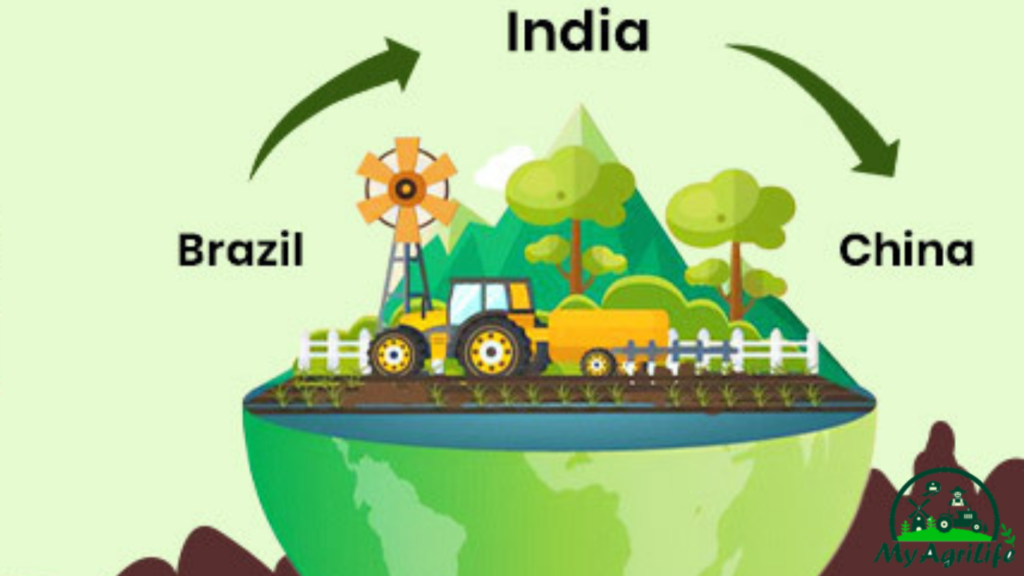
1.Crop Diversity: India is known for its diverse range of crops due to its varied agro-climatic zones. It is a major producer of rice, wheat, pulses, oilseeds, cotton, sugarcane, spices, and fruits. Different regions specialize in specific crops based on their climatic conditions.
2.Small-Scale Farming: The majority of agricultural activities in India are carried out by small-scale farmers who cultivate small landholdings. These farmers contribute significantly to the agricultural sector and food production.
3.Green Revolution: India underwent a Green Revolution in the 1960s and 1970s, which introduced high-yielding crop varieties, improved irrigation, and modern agricultural practices. This revolution helped increase agricultural productivity, particularly in wheat and rice production.
4.Rice and Wheat Production: Rice and wheat are staple crops in India. The country is one of the largest producers of rice globally, with both paddy and non-paddy varieties grown. Wheat cultivation is primarily concentrated in the northern states.
5.Pulses and Oilseeds: India is a significant producer of pulses (such as lentils, chickpeas, and beans) and oilseeds (such as mustard, soybeans, and groundnuts). These crops contribute to the country’s protein and oilseed requirements.
6.Horticulture: India has a thriving horticulture sector that includes the cultivation of fruits, vegetables, and spices. It is known for its production of mangoes, bananas, citrus fruits, onions, tomatoes, spices like turmeric and chili, and more.
7.Livestock and Dairy: Livestock rearing, including cattle, buffaloes, goats, and poultry, is an integral part of Indian agriculture. The country has a significant dairy industry and is the largest milk producer globally.
8.Organic Farming: India has a substantial organic farming sector, with farmers practicing traditional and organic methods of cultivation. The country ranks among the top organic producers globally.
9.Agricultural Challenges: India faces various agricultural challenges, including water scarcity, land degradation, climate change impacts, and low farm productivity. Efforts are being made to address these challenges through sustainable farming practices, irrigation projects, and agricultural research.
10.Government Initiatives: The Indian government implements several initiatives and programs to support the agricultural sector. These include subsidies, crop insurance schemes, investment in agricultural infrastructure, and measures to improve market access for farmers.
Agriculture remains a vital sector in India, employing a significant portion of the population and contributing to food security. The government continues to focus on rural development, agricultural research, technology adoption, and sustainable farming practices to enhance productivity and uplift the livelihoods of farmers.
Canada
Canada has a robust agricultural sector that contributes to its economy, food security, and international trade. Here are some key points about agriculture in Canada:
1.Diverse Agricultural Production: Canada’s agricultural sector is diverse and spans a wide range of products. It produces grains (wheat, barley, oats), oilseeds (canola, soybeans), pulses (lentils, chickpeas), fruits (apples, berries), vegetables, livestock (cattle, pigs, poultry), dairy products, and more.
2.Wheat and Canola Production: Canada is one of the largest wheat producers in the world, particularly spring and durum wheat. It is also a major producer of canola, an important oilseed crop known for its versatile uses and high oil content.
3.Livestock and Dairy: The livestock industry plays a significant role in Canadian agriculture. Cattle and calves are reared for beef production, while pigs and poultry are raised for meat. Canada also has a well-developed dairy industry, producing milk, cheese, butter, and other dairy products.
4.Agriculture in the Prairies: The Prairie provinces of Alberta, Saskatchewan, and Manitoba are known as the “grain belt” of Canada. These provinces have vast expanses of fertile land and are key regions for crop production, especially wheat, canola, and barley.
5.Supply Management System: Canada operates a supply management system for certain agricultural sectors, including dairy, poultry, and eggs. This system controls production levels and ensures stable prices for farmers, although it has faced debates and discussions regarding its impact on trade and market access.
6.Sustainable Farming Practices: Canadian farmers are increasingly adopting sustainable farming practices to protect the environment and natural resources. These practices include conservation tillage, precision agriculture, crop rotation, and integrated pest management.
7.Agricultural Research and Innovation: Canada has renowned agricultural research institutions and universities that contribute to advancements in farming techniques, crop varieties, and livestock genetics. Research organizations like Agriculture and Agri-Food Canada support the development of innovative technologies and sustainable practices.
8.Export-Oriented Agriculture: Canada is a major exporter of agricultural products, benefiting from its access to global markets. It exports a wide range of commodities, including grains, oilseeds, beef, pork, pulses, seafood, and processed food products.
9.Climate Challenges: Canada’s vast geography and diverse climate present challenges for acoastal areas face shorter growing seasons and colder climates. However, advancements in technology and breeding have enabled farming in these challenging regions.
10.Government Support: The Canadian government provides various supports to the agricultural sector, including financial assistance, research funding, risk management programs, and trade promotion initiatives.These measures aim to enhance competitiveness, sustainability, and the economic viability of farming.
Canada’s agricultural sector combines large-scale production with sustainable practices and diverse products. The country’s commitment to research and innovation, coupled with its access to global markets, contributes to the strength of its agricultural industry.
Australia
Australia has a thriving agricultural sector known for its diverse range of products, advanced farming practices, and significant contributions to the economy. Here are some key points about agriculture in Australia:
1.Vast Agricultural Land: Australia has a vast expanse of agricultural land, with diverse climates and soil types across different regions. It encompasses large-scale farms as well as smaller family-owned operations.
2.Wheat and Barley Production: Australia is a major producer of wheat and barley, with vast wheat-growing regions in the east and south. It exports a significant portion of its wheat production, contributing to the global grain market.
3.Livestock Production: Australia has a strong livestock industry, including cattle, sheep, and goats. Cattle farming is prominent in northern regions, while sheep farming is common in southern and central areas. Livestock exports, particularly beef and lamb, are significant for the Australian economy.
4.Wool Industry: Australia is known for its high-quality wool production, and the wool industry has a long history in the country. Merino sheep, famous for their fine wool, are a key focus of the industry.
5.Horticulture: Australia has a thriving horticulture sector, producing a wide variety of fruits, vegetables, nuts, and wine grapes. It is known for its citrus fruits, apples, pears, grapes, almonds, and tropical fruits like mangoes and bananas.
6.Dairy Farming: Australia has a well-developed dairy industry, with dairy farms located mainly in southeastern regions. It produces milk, cheese, butter, and other dairy products for domestic consumption and export.
7.Sustainable Farming Practices: Australian farmers employ sustainable farming practices to manage scarce water resources and address environmental challenges. Techniques such as precision agriculture, water-efficient irrigation, and soil conservation help ensure the long-term viability of farming.
8.Research and Development: Australia has reputable agricultural research institutions and organizations that focus on improving agricultural productivity, developing new varieties, and addressing challenges specific to the Australian agricultural landscape. The Commonwealth Scientific and Industrial Research Organisation (CSIRO) is one of the prominent research agencies in the country.
9.Export Market: Australia is a significant exporter of agricultural products. It exports commodities such as wheat, barley, beef, lamb, wool, dairy products, wine, and horticultural produce to various international markets.
10.Government Support: The Australian government provides support to the agricultural sector through policies, funding for research and development, infrastructure development, and assistance programs during times of natural disasters or market fluctuations.
Australia’s agricultural sector combines large-scale production with sustainable farming practices. The country’s advanced agricultural technologies, research capabilities, and access to international markets contribute to its competitiveness and success in the global agricultural landscape.
France
France is renowned for its rich agricultural heritage, diverse agricultural landscapes, and high-quality food and wine production. Here are some key points about agriculture in France:
1.Agricultural Diversity: France has a diverse range of agricultural activities, including crop cultivation, livestock farming, and viticulture. Different regions specialize in specific products based on their climatic conditions and geographical features.
2.Wine Production: France is globally recognized for its wine production. It has numerous renowned wine-growing regions, such as Bordeaux, Burgundy, Champagne, and the Rhône Valley. French wines are highly esteemed for their quality and variety.
3.Cereal Crops: France is a significant producer of cereal crops, particularly wheat, barley, maize, and rice. Wheat is the most cultivated cereal crop, and France is one of the leading wheat exporters in the European Union.
4.Dairy Farming: Dairy farming is prominent in France, with a focus on milk and cheese production. The country is renowned for its wide variety of cheeses, including Camembert, Brie, Roquefort, and Comté.
5.Livestock: France has a well-developed livestock industry, with cattle, sheep, pigs, and poultry being the main livestock species. It produces high-quality meat, such as beef (e.g., Charolais), lamb, pork, and poultry.
6.Fruits and Vegetables: France is known for its fruit orchards and vegetable farms. It produces a diverse range of fruits, including apples, pears, cherries, and stone fruits. Vegetables like potatoes, carrots, lettuce, and tomatoes are also cultivated.
7.Organic Farming: France has a strong organic farming movement, with a significant portion of agricultural land dedicated to organic production. Organic farming practices focus on sustainability, biodiversity conservation, and reducing chemical inputs.
8.Research and Innovation: France has renowned agricultural research institutions and universities that contribute to advancements in farming techniques, crop varieties, and agricultural sustainability. Institutes like INRAE (National Research Institute for Agriculture, Food, and the Environment) drive agricultural research and innovation.
9.Farmers Markets and Local Produce: France has a vibrant culture of farmers markets and emphasizes the consumption of locally produced food. Farmers markets provide opportunities for small-scale producers to sell their products directly to consumers.
10.Protected Geographical Indications (PGI) and Appellations: France has a system of protected geographical indications and appellations that ensure the origin and quality of certain agricultural products. These labels provide recognition and protection to traditional and regional specialties.
France’s agricultural sector blends traditional farming practices with modern technologies and a focus on quality and sustainability. The country’s culinary reputation, diverse agricultural landscapes, and commitment to preserving agricultural traditions contribute to its global recognition as a leading agricultural producer.
Argentina
Argentina has a prominent agricultural sector known for its vast fertile lands, diverse agricultural production, and significant contributions to global food markets. Here are some key points about agriculture in Argentina:
1.Breadbasket of the World: Argentina is often referred to as the “breadbasket of the world” due to its ability to produce large quantities of agricultural commodities. It has extensive fertile plains, such as the Pampas region, which are ideal for agriculture.
2.Grain Production: Argentina is a major producer and exporter of grains, particularly soybeans, corn, and wheat. It ranks among the top global producers of these crops, with soybeans being the most significant export crop.
3.Beef Production: Argentina is renowned for its beef production, and cattle ranching plays a crucial role in the country’s agriculture. The expansive grasslands of the Pampas provide ideal conditions for grazing, and Argentine beef is highly regarded worldwide.
4.Dairy and Poultry: Argentina also has a well-developed dairy industry, producing milk, cheese, and other dairy products. Poultry farming, including chicken and egg production, is an important component of the agricultural sector as well.
5.Wine Production: Argentina is one of the world’s largest wine producers. It is known for its Malbec wine, particularly from the Mendoza region. Wine production in Argentina has gained international recognition for its quality and diverse varietals.
6.Oilseeds and Vegetable Oils: In addition to soybeans, Argentina produces other oilseeds such as sunflower seeds and peanuts. The country is a significant producer of vegetable oils, including soybean oil and sunflower oil, which are widely used in food processing and cooking.
7.Citrus Fruits and Grapes: Argentina is a major producer of citrus fruits, such as oranges, lemons, and grapefruits. It is also known for its grape production, contributing to the wine industry as well as table grapes and raisins.
8.Agricultural Exports: Agriculture is a crucial sector for Argentina’s economy, as the country is a significant exporter of agricultural commodities. It exports grains, oilseeds, beef, wine, dairy products, fruits, and vegetables to global markets.
9.Land Ownership and Farm Sizes: Argentina has a mix of large-scale agricultural operations and smaller family-owned farms. Historically, large landholdings, known as estancias, have played a significant role in agricultural production.
10.Technological Advancements: Argentine agriculture has seen advancements in agricultural technology and practices, including the use of precision farming techniques, modern machinery, and biotechnology. These innovations contribute to increased productivity and efficiency.
The agricultural sector in Argentina is a cornerstone of the country’s economy, contributing to employment, export revenue, and food production. Its favorable natural resources, coupled with ongoing technological advancements, position Argentina as a key player in global agricultural markets.
Germany
Germany has a diverse and highly productive agricultural sector known for its modern farming practices, technological advancements, and adherence to strict quality standards. Here are some key points about agriculture in Germany:
1.Crop Cultivation: Germany cultivates a variety of crops, including grains (wheat, barley, rye), oilseeds (rapeseed, sunflower), sugar beets, potatoes, fruits (apples, cherries, berries), and vegetables. The country has different agricultural regions, each specializing in specific crops based on soil and climate conditions.
2.Livestock Farming: Livestock farming is a significant component of German agriculture. Cattle, pigs, poultry, and sheep are raised for meat production, while dairy farming plays a vital role in milk and cheese production. Animal welfare standards and sustainability practices are given high priority.
3.Organic Farming: Germany has a strong organic farming sector, with a significant portion of agricultural land dedicated to organic production. Organic farming practices prioritize environmental sustainability, biodiversity conservation, and the reduction of chemical inputs.
4.Precision Agriculture: German farmers employ advanced technologies and precision agriculture practices to optimize crop yields and minimize resource use. This includes the use of GPS, sensors, drones, and data analytics to enhance efficiency and sustainability in farming operations.
5.Agricultural Research and Innovation: Germany has renowned agricultural research institutes and universities that contribute to advancements in farming techniques, crop breeding, and sustainable agriculture. Institutions like the Leibniz Institute for Agricultural Engineering and Bioeconomy (ATB) and the Max Planck Institute for Plant Breeding Research are prominent in this field.
6.Sustainable Farming Practices: German farmers prioritize sustainability by implementing practices such as crop rotation, reduced pesticide use, efficient irrigation, and soil conservation. Agroforestry and agroecology approaches are also gaining attention for their ecological benefits.
7.Protected Geographical Indications (PGI) and Quality Standards: Germany has a system of protected geographical indications and quality labels that ensure the authenticity and quality of regional agricultural products. Examples include the AOC label for wines and the EU-protected GIs for products like Black Forest Ham and Bavarian beer.
8.Agricultural Cooperatives: Agricultural cooperatives play a significant role in Germany’s agricultural sector. These cooperatives enable farmers to collectively market their products, share resources, and engage in joint agricultural activities.
9.Sustainable Forestry: Germany has a well-managed forestry sector that focuses on sustainable timber production and environmental conservation. Forests also contribute to biodiversity preservation and recreational activities.
10.Direct Farm-to-Consumer Sales: Germany encourages direct sales of agricultural products from farmers to consumers through farmer’s markets, farm shops, and community-supported agriculture (CSA) initiatives. This fosters a connection between farmers and consumers and promotes local and seasonal produce.
Germany’s agricultural sector combines innovation, sustainability, and quality standards to meet the demands of domestic and international markets. The country’s commitment to research, technological advancements, and environmental stewardship contributes to the strength of its agricultural industry.
